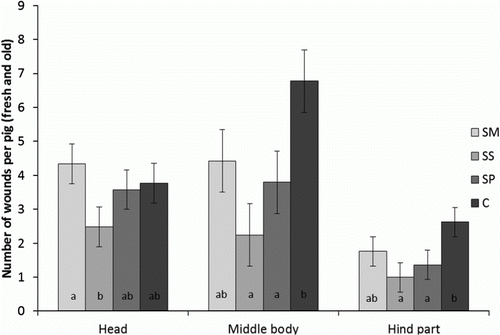Figures & data
Table I. Chemical composition of feeds and feedstuffs.
Table II. Ethogram of behaviours of pigs in the video recordings.
Figure 1. Body sections on which wound numbers and pig cleanliness were recorded: head, middle of body and hind part.
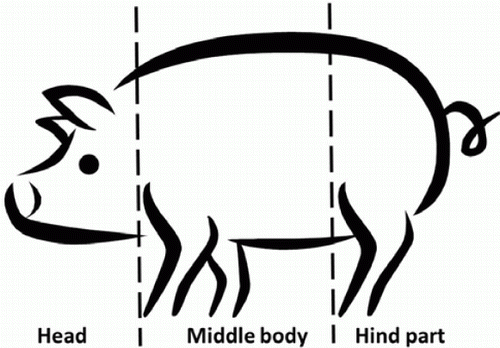
Figure 2. Proportion (%) of time (least square means±standard error) that pigs in treatments SM, SS, SP and C spent eating, nosing/biting the pen floor, nosing/biting pen fittings and nosing/biting other pigs. Different letters (a, b) for different treatments indicate pair-wise differences at p<0.1. N=64.

Figure 3. Proportion (%) of time (least square means±standard error) that pigs in treatments SM, SS, SP and C spent located in front of the feed trough, in the lying area and in the slatted area. Different letters (a, b) for different treatments indicate pair-wise differences at p<0.1. N=64.
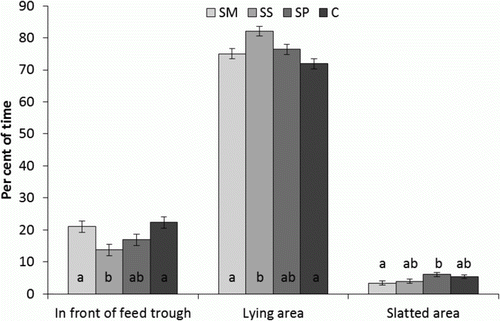
Table III. Proportion (%) of time spent eating, nosing/biting pen floor, nosing/biting pen fittings, nosing/biting other pigs, in front of the feed trough, in the lying area and in the slatted area, per treatment.
Figure 4. Number of nose, lift, bite/head knock and climb interactions (least square means±standard error) per pig in the period: (a) 15–5 minutes before and (b) 5–15 minutes after feeding in treatments SM, SS, SP and C. Different letters (a, b) for different treatments indicate pair-wise differences at p<0.1. N=123–128.
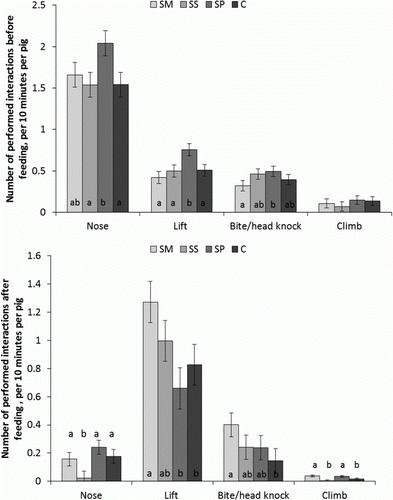
Figure 5. Reaction of receiving pigs: proportion (%) of social interactions per treatment (SM, SS, SP and C) with each specific reaction (return approach, avoid, no reaction and receiving pig in other pen) when the performing pig nosed, lifted, bit/head-knocked or climbed on the receiving pig. N=123–128.
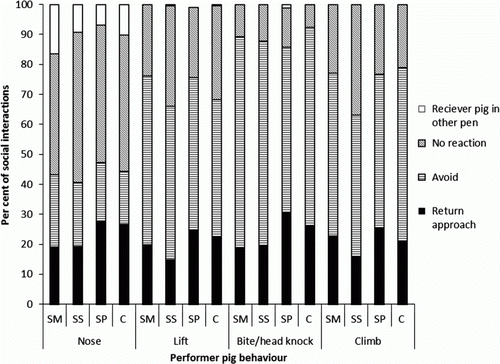
Figure 6. Number of wounds per pig (fresh and old) on the head, middle and hind part of the body in the SM, SS, SP and C treatments (least square means±standard error). Different letters (a, b) for different treatments indicate pair-wise differences at p<0.1. N=16.
